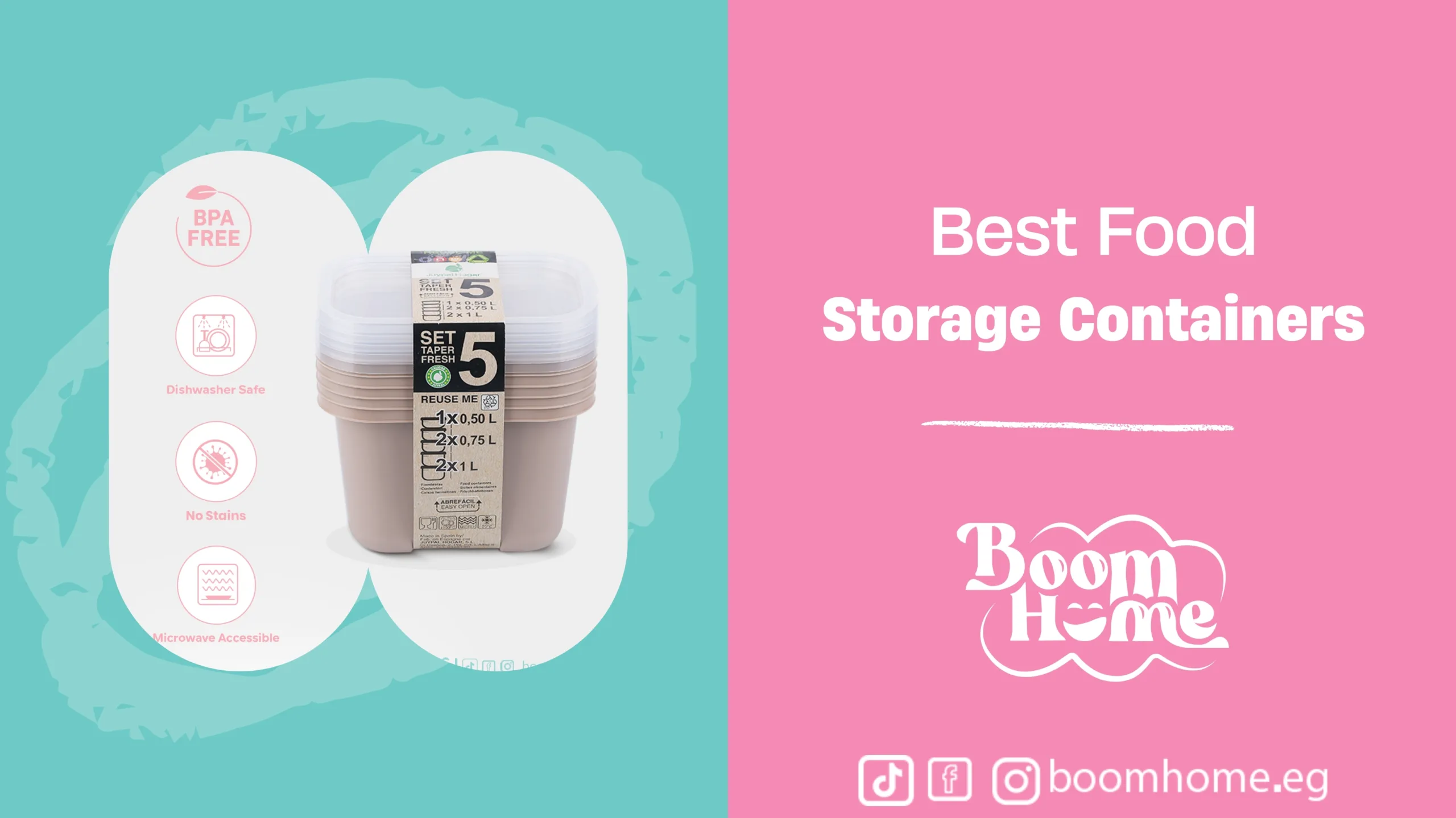Best Food Storage Containers
Best Food Storage Containers become an indispensable part of our daily lives, They are not just simple vessels for storing food, but practical solutions that help preserve flavor and quality while preventing spoilage. These containers come in a wide variety of materials and sizes, such as plastic, glass, stainless steel, and silicone. In this article, we will explore the best types of food containers along with their advantages and disadvantages.
Best Type of Food Containers
Food containers are essential tools that cannot be overlooked in our daily lives, as they help maintain the safety and freshness of food for longer periods. With the variety of materials available—such as insulated fabric lunch bags, stainless steel, plastic, glass, and silicone—it has become important to understand the pros and cons of each type in order to choose the best option according to our needs.
1. Insulated Fabric Food Container
This type is widely used, especially for trips, as it is lightweight and practical. In addition, it is made from insulating materials that help maintain the food’s temperature, keeping it hot or cold for a long time. Below, we will review its key advantages and disadvantages to determine how suitable it is for your daily use.
Advantages:
- Lightweight and easy to carry.
- Maintains the temperature of food for several hours.
- More affordable compared to others.
Disadvantages:
- May sometimes retain odors.
- Cannot be used directly in the microwave or oven.
2. Stainless Steel Food Container
Stainless steel containers are considered the most durable and sturdy, as they are made from high-quality materials. They are especially favored by people who want a reliable option for keeping food hot for extended periods.
Advantages:
- Long lifespan.
- Does not react with food.
- Easy to clean and does not absorb food odors.
Disadvantages:
- Heavier compared to other types.
- Not suitable for microwave use.
- More expensive than plastic containers.
3. Plastic is the Best Food Storage Containers
Plastic containers are among the most commonly used types in our daily lives, as they are a household essential thanks to their ease of use and variety of shapes. At Boom Home, you can find a wide range of plastic food storage in different sizes and capacities to suit all needs—whether for storing food in the refrigerator or carrying meals to work or school. Below, we will go over the main advantages and disadvantages of this type.
Advantages:
- Lightweight and easy to store.
- Some types are microwave- and dishwasher-safe, which is exactly what you’ll find in our food storage containers.
- Affordable for everyone.
- Eco-friendly, made from safe and recyclable materials.
- Safe to use in the refrigerator and freezer, as they can withstand temperatures as low as -40°C.
Disadvantages:
- Easily scratched.
- Low-quality types may contain harmful chemicals such as BPA.
Also Knowing That: all of our food storage containers at Boom Home are free from BPA and any other harmful substances.
4. Glass Food Container
Glass food containers are considered a completely safe and healthy option for storing food, as glass is an inert material that does not react with food, whether hot or cold. Below, we will highlight their key advantages and disadvantages to help determine how suitable they are for your daily use.
Advantages:
- Made from 100% safe and healthy materials that do not release any harmful substances when in contact with food.
- Can withstand both high and low temperatures, making them suitable for use in the microwave, oven, and freezer.
- Easy to clean and do not retain any food residues after washing.
- Preserve the original flavor of food without absorbing odors or colors.
Disadvantages:
- Heavier in weight compared to plastic and silicone.
- Breaks easily.
- Not suitable for children or outdoor use.
- More expensive than plastic.
5. Silicone Food Container
Silicone containers are among the newest types of food storage options. They are lightweight and highly flexible, which makes them easy to use and very practical for travel or outdoor activities. Below, we will review their main advantages and disadvantages.
Advantages:
- Lightweight, flexible, and easy to store.
- Eco-friendly and safe to use.
- Can withstand both high and low temperatures.
- Can be folded to save storage space.
Disadvantages:
- May not be available in a wide range of sizes and shapes.
- Generally, more expensive compared to other types.
- Still less common than traditional options.
Q&A About Best Food Storage Containers
1. How long can food be preserved in a container?
- The duration depends on the type of container and the type of food. Generally, they maintain temperature from around 6 hours up to several days when refrigerated.
2.Which food container keeps food hot the best?
- The best option for keeping food hot is a stainless-steel thermal container, as it is highly effective in retaining heat for extended hours.
3. Can food containers be placed in the refrigerator?
- Yes, most containers are safe for refrigerator use, but it is always recommended to check if the material is suitable for cooling.
4. Are plastic containers safe for hot food?
- They can be used if made from high-quality, BPA-free materials. However, extremely hot food should not be placed directly inside.
5. Can plastic or glass food containers be used in the microwave?
- Glass is completely safe. Plastic containers must be labeled Microwave Safe, and it is advisable to remove the lid during heating to prevent steam buildup.
6. How can I make sure a container is BPA-free?
- Look for the BPA Free label on the product or check if it is made from polypropylene (PP).
7. What is the lifespan of food containers, and when should they be replaced?
- It typically ranges from 1 to 5 years depending on quality and usage. They should be replaced if scratches, cracks, or weakened seals appear.
Mistakes When Using Best Food Storage Containers (Avoid Them)
- Placing extremely hot food directly into plastic containers, which may cause damage or release unsafe substances.
Tip: Allow food to cool slightly before storing it in plastic containers. - Cleaning containers with sharp tools or rough sponges.
Tip: Use a soft sponge to avoid scratches. - Not sealing the lid tightly, which can lead to liquid leakage and reduced food quality.
Tip: Always double-check that the lid is properly closed. - Leaving food in the container for longer than recommended, which can cause spoilage.
Tip: Follow storage time guidelines depending on the type of food and container. - Using containers that are not microwave-safe, which may cause health risks.
Tip: Only use containers labeled as “Microwave Safe.” - Ignoring the need to replace containers once scratches or cracks appear.
Tip: Replace damaged containers promptly to maintain food safety.


